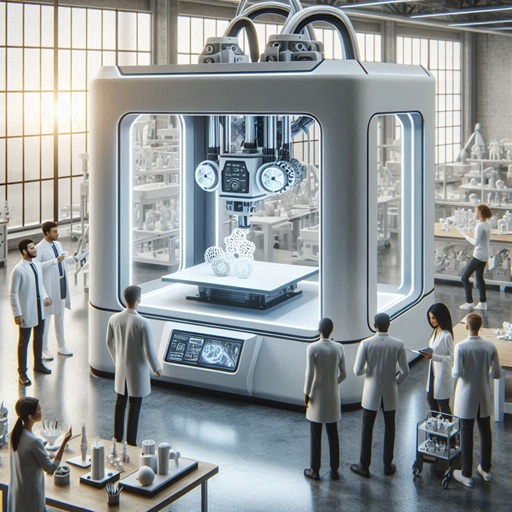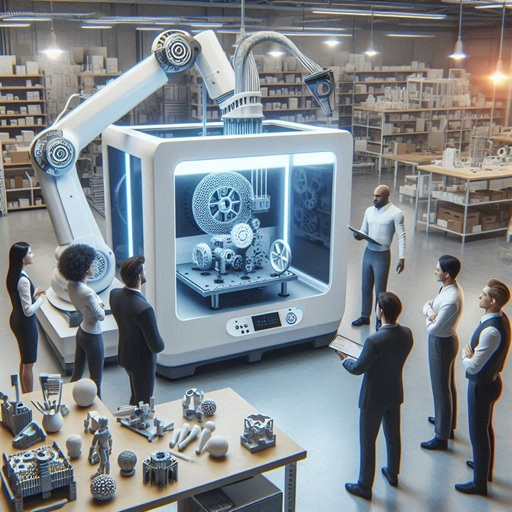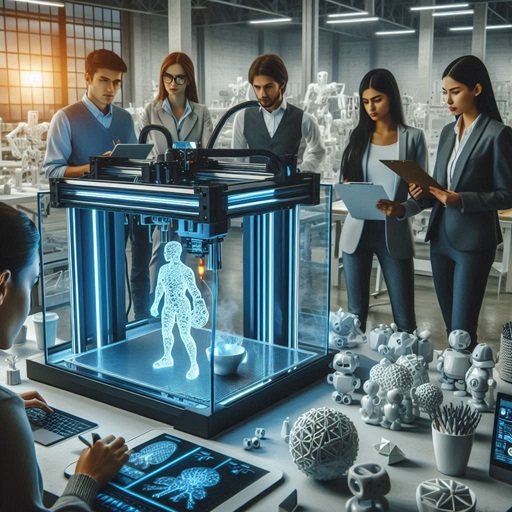The Robotic Additive Manufacturing Market is revolutionizing the manufacturing industry by combining the precision of robotics with the flexibility of additive manufacturing (AM). This synergy is driving innovation across various sectors, including aerospace, automotive, healthcare, and consumer goods. As industries increasingly adopt automation and advanced manufacturing techniques, the demand for robotic additive manufacturing solutions is surging. This article delves into the intricacies of the Robotic Additive Manufacturing Market, exploring its current trends, growth drivers, challenges, and future prospects.
Robotic Additive Manufacturing (RAM) refers to the use of robotic systems to perform additive manufacturing processes. Unlike traditional manufacturing methods that involve subtractive techniques (cutting, drilling, etc.), additive manufacturing builds objects layer by layer from digital models. When combined with robotics, this process becomes more efficient, precise, and scalable.
Key Components of Robotic Additive Manufacturing
- Robotic Arms: These are the primary tools used in RAM. They are equipped with end-effectors designed for specific additive manufacturing processes.
- Additive Manufacturing Technologies: Common technologies include Fused Deposition Modeling (FDM), Stereolithography (SLA), Selective Laser Sintering (SLS), and Direct Energy Deposition (DED).
- Software: Advanced software solutions are used for design, simulation, and control of the robotic systems.
- Materials: A wide range of materials, including polymers, metals, and composites, are used in RAM.
Market Overview
Key Market Drivers
- Increased Demand for Customization: The ability to produce customized products efficiently is a significant driver for the RAM market.
- Advancements in Robotics and AI: Innovations in robotics and artificial intelligence are enhancing the capabilities of RAM systems.
- Reduced Waste and Material Costs: Additive manufacturing minimizes material waste, leading to cost savings.
- Growing Adoption in Aerospace and Automotive: These industries are increasingly adopting RAM for prototyping and production of complex parts.
- Government Initiatives and Funding: Governments worldwide are investing in advanced manufacturing technologies, including RAM.
Market Challenges
- High Initial Investment: The cost of setting up RAM systems can be prohibitive for small and medium-sized enterprises (SMEs).
- Technical Limitations: Current RAM technologies have limitations in terms of speed, material compatibility, and part size.
- Skilled Labor Shortage: The complexity of RAM systems requires skilled operators, which are in short supply.
Market Segmentation
By Technology
- Fused Deposition Modeling (FDM)
- Stereolithography (SLA)
- Selective Laser Sintering (SLS)
- Direct Energy Deposition (DED)
- Others
By Material
- Polymers
- Metals
- Composites
- Ceramics
- Others
By End-User Industry
- Aerospace
- Automotive
- Healthcare
- Consumer Goods
- Industrial Manufacturing
- Others
By Region
- North America
- Europe
- Asia-Pacific
- Latin America
- Middle East & Africa
Regional Analysis
North America
North America dominates the Robotic Additive Manufacturing Market, accounting for over 40% of the global market share in 2022. The presence of key players, advanced infrastructure, and significant investments in R&D are driving growth in this region.
Europe
Europe is the second-largest market for RAM, with countries like Germany, the UK, and France leading the way. The region’s strong automotive and aerospace industries are key contributors to market growth.
Asia-Pacific
The Asia-Pacific region is expected to witness the highest growth rate during the forecast period. Rapid industrialization, increasing adoption of advanced manufacturing technologies, and government initiatives are fueling market growth in this region.
Latin America and Middle East & Africa
These regions are still in the nascent stages of adopting RAM technologies. However, increasing awareness and investments in advanced manufacturing are expected to drive growth in the coming years.
Competitive Landscape
The Robotic Additive Manufacturing Market is highly competitive, with several key players vying for market share. Some of the prominent players include:
- Stratasys Ltd.
- 3D Systems Corporation
- EOS GmbH
- Materialise NV
- Renishaw plc
- HP Inc.
- Desktop Metal, Inc.
- Carbon, Inc.
- SLM Solutions Group AG
- Arcam AB
Future Trends and Opportunities
Integration with IoT and AI
The integration of the Internet of Things (IoT) and Artificial Intelligence (AI) with RAM systems is expected to revolutionize the market. IoT-enabled RAM systems can provide real-time monitoring and predictive maintenance, while AI can optimize the manufacturing process for better efficiency and quality.
Development of New Materials
The development of new materials, such as advanced composites and high-performance polymers, is expected to open new avenues for the RAM market. These materials can offer enhanced properties, such as higher strength, durability, and thermal resistance.
Expansion in Emerging Markets
Emerging markets in Asia-Pacific, Latin America, and Africa present significant growth opportunities for the RAM market. Increasing industrialization, rising disposable incomes, and government support for advanced manufacturing are expected to drive market growth in these regions.
Sustainability and Green Manufacturing
Sustainability is becoming a key focus area for manufacturers. RAM technologies, with their ability to minimize waste and energy consumption, are well-positioned to support green manufacturing initiatives.
The Robotic Additive Manufacturing Market is poised for significant growth in the coming years, driven by advancements in robotics, increasing demand for customization, and growing adoption across various industries. While challenges such as high initial investment and technical limitations exist, ongoing innovations and strategic initiatives by key players are expected to overcome these hurdles. As the market continues to evolve, the integration of IoT, AI, and the development of new materials will further enhance the capabilities and applications of RAM technologies.
FAQs
1. What is Robotic Additive Manufacturing?
Robotic Additive Manufacturing (RAM) refers to the use of robotic systems to perform additive manufacturing processes, building objects layer by layer from digital models.
2. What are the key drivers of the Robotic Additive Manufacturing Market?
Key drivers include increased demand for customization, advancements in robotics and AI, reduced waste and material costs, growing adoption in aerospace and automotive industries, and government initiatives and funding.
3. What are the challenges faced by the Robotic Additive Manufacturing Market?
Challenges include high initial investment, technical limitations, and a shortage of skilled labor.
4. Which regions are leading in the Robotic Additive Manufacturing Market?
North America dominates the market, followed by Europe and Asia-Pacific. Asia-Pacific is expected to witness the highest growth rate during the forecast period.
5. Who are the key players in the Robotic Additive Manufacturing Market?
Key players include Stratasys Ltd., 3D Systems Corporation, EOS GmbH, Materialise NV, Renishaw plc, HP Inc., Desktop Metal, Inc., Carbon, Inc., SLM Solutions Group AG, and Arcam AB.
6. What are the future trends in the Robotic Additive Manufacturing Market?
Future trends include the integration of IoT and AI, development of new materials, expansion in emerging markets, and a focus on sustainability and green manufacturing.
7. What are the key applications of Robotic Additive Manufacturing?
Key applications include prototyping, production of complex parts, customization, and repair and maintenance in industries such as aerospace, automotive, healthcare, and consumer goods.
8. How does Robotic Additive Manufacturing contribute to sustainability?
RAM contributes to sustainability by minimizing material waste, reducing energy consumption, and supporting green manufacturing initiatives.
9. What are the different technologies used in Robotic Additive Manufacturing?
Technologies include Fused Deposition Modeling (FDM), Stereolithography (SLA), Selective Laser Sintering (SLS), Direct Energy Deposition (DED), and others.



